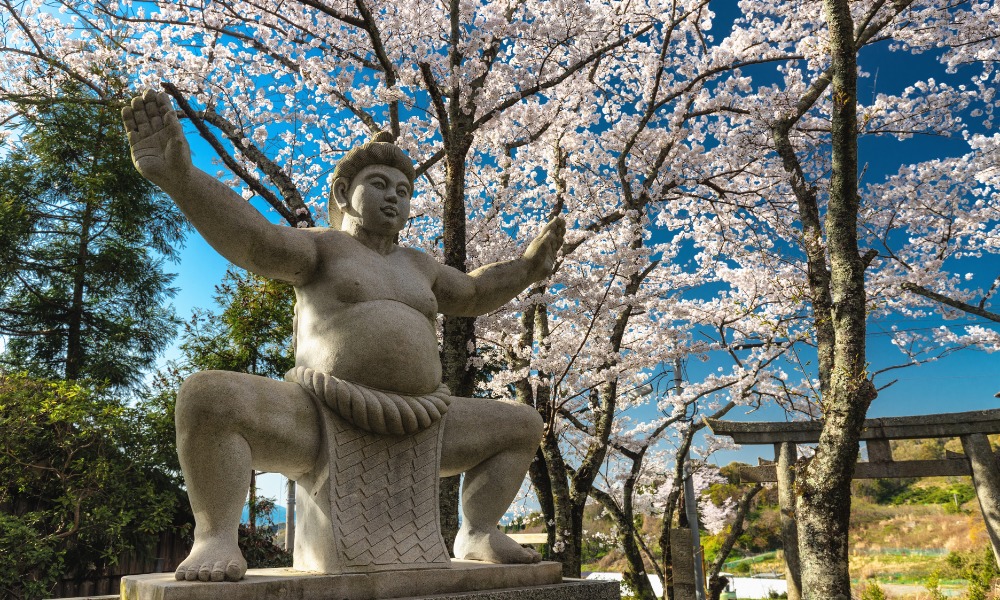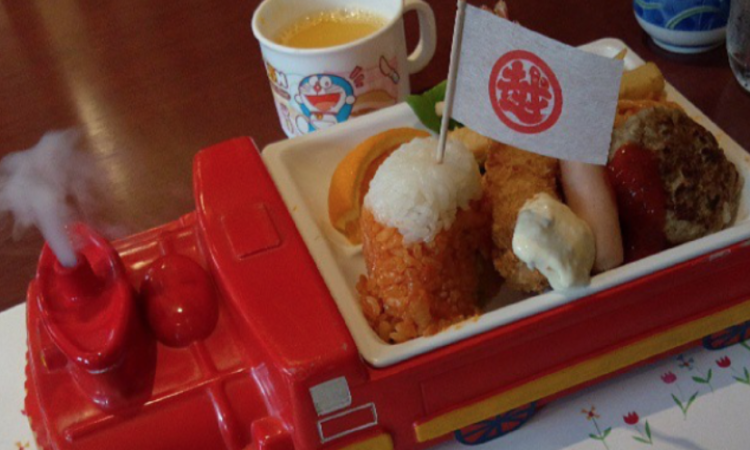Sumo (相撲) is a Japanese wrestling style and by far the most traditional national sport Japan offers. If you are a sumo wrestler and you are successful, you will be praised and celebrated like a pop star. From ancient times until this day, sumo is an extremely popular sport among spectators and also a culture deeply rooted tradition that is still very much alive.
To find out in this article what sumo is all about, what history it has, how much a sumo wrestler makes in a year and what to look out for when visiting one of the sumo tournaments in the future.
The Historical Background of Sumo

Photo credit: Canva
The art of sumo is much more than striking poses and wrestling on a ring-shaped fighting ground made of clay. Sumo goes way back in time. It was originally invented around the Heian period (794-1192), almost 1,000 years ago, to entertain the Japanese gods. In ancient times, they prayed to the gods for success and participated in Shinto rituals to ask about the gods’ intentions. Sumo is rich in history and traditions that have evolved over the last centuries. Until this day, only men are allowed to train professionally as sumo wrestlers. The rules of a sumo match are easy to understand. Two sumo wrestlers (力士; rikishi) come together in an elevated ring, which is called dohyo (土俵) and the first rikishi, who falls out of the ring or touches the ground with any other parts besides his feet, loses. Both wrestlers wear nothing but a wide loincloth mawashi ((廻し) and fight only with bare hands. Important to mention is that there are no weight classes or weight restrictions in sumo compared to other sports, such as boxing. So weight gain is a very important part of a life of a sumo wrestler.
How To Eat Like A Sumo Wrestler

Photo credit: Canva
Surprisingly, many sumo wrestlers only eat two meals daily and skip breakfast before their first 3-5 hours of training sessions. They follow a very rigid and strict plan, so in regard to eating, they also have to be very disciplined. The most famous food a sumo wrestler eats is chanko nabe (ちゃんこ鍋). Chanko nabe is a rich stew with many vegetables, meat and tofu. As sumo wrestlers need to eat around 8,000 calories a day, this is the perfect meal to get a sturdy stature and eat healthy at the same time. It is also exciting that chanko nabe is traditionally only served with chicken. Legend has it those sumo wrestlers would have to support themselves with their hands during a fight if they ate the meat of four-legged animals beforehand.
Preparation is Everything – Interesting Sumo Rituals Before The Fight
Ceremonies from times past are still an integral part of the wrestlers’ daily lives. This is why, we curated the most important ones that take place before the “actual fight” which is often – surprisingly short.
Salt Throwing
A ritual that is practised to this day is that a sumo wrestler and his component sprinkles salt around the sumo ring to purify it. This symbol of cleansing and purification before every match shows their humility in front of the divine gods and asks them for mercy. Also, on a more practical note, salt is a drying agent and natural disinfectant because sumo fights tend to get quite sweaty.
Sumo Wrestler Dance
Then both rikishi perform a series of prescribed movements. They slowly squat down, clap their hands twice, rub them against each other and then stretch their arms wide apart with the palms facing down. This ritual dates back to when sumo matches were held in the open air. The wrestlers would pull out tufts of grass to clean their hands with the rope clinging to them. With these movements, the rikishi also showed that they were not holding any weapons
Drinking The Water of Strength
Water is also an essential part of sumo ceremonies. Wooden vats filled with “water of strength” (力水; chikara mizu) are placed outside the ring for the wrestlers to rinse their mouths and symbolically cleanse their bodies. Often, sumo wrestlers repeat this and the prior procedures over and over again. The actual fight only lasts a few seconds in most cases, so mental preparation and “unsettling” the opponent are essential.
Stomping Procedure and Staring
Next, they go to the centre of the ring, lift one leg, stomp powerfully and then repeat this movement with the other leg. This ritual stomping (shiko) is a simple warm-up exercise that strengthens the lower body. The original purpose is said to have been to stomp the evil spirits into the ground literally.
Now both wrestlers are almost ready for the fight. They squat down and stare at each other, controlling their breath. Then, finally, they expel the air, only to fill their lungs again and hold their breath. This is when their power is at its greatest, and thus the conditions are ideal for them to lunge forward and crash into each other.
How Much Money Does a Sumo Wrestler Make?

Photo credit: Canva
Depending on skill and ranking, sumo wrestlers earn a huge amount of money. A good sumo wrestler gets between 1.1 and 3 million yen per month. As there are six big tournaments in a year held in Japan, the winner receives more than 10.000 million yen (78,000 USD). However, fame often comes at a price. The hard sport and the high body weight take their toll: cardiovascular diseases, diabetes and complaints of intervertebral discs and joints can mean that many sumo wrestlers do not live beyond the age of 45. When a sumo wrestler retires, a special ceremony will be held.
Final Words About Sumo Wrestler-Traditions
Sumo is more than just a normal wrestling match. It is Japan’s national sport, where ceremonies and competitions are closely interwoven. So whenever you do get the chance to visit a sumo match, make sure to go!
Related Articles:
Why Your Japan Bucket-List Should Include the Kabuki Experience!




![Regular Procedures for Foreigners Entering Japan [Part.2]](https://guidable.co/wp-content/uploads/2016/07/スクリーンショット-2016-07-24-14.35.43-750x450.png)

